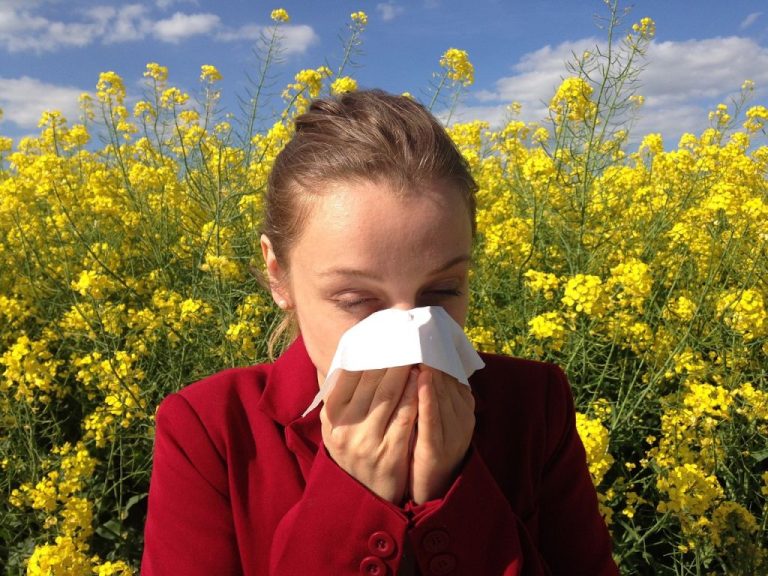
Allergies are a common yet often misunderstood condition that affects millions of people worldwide. They occur when the immune system reacts to a foreign substance—such as pollen, bee venom, or pet dander—that doesn’t cause a reaction in most people. These substances are known as allergens. This article explores common allergies, their triggers, symptoms, and the latest treatments available to manage them effectively.
Common Allergies and Their Triggers
- Pollen Allergy (Hay Fever)
- Triggers: Tree, grass, and weed pollens.
- Details: Pollen allergies are seasonal, occurring when plants release pollen into the air. Common triggers include ragweed, birch trees, and Timothy grass.
- Symptoms: Sneezing, runny or stuffy nose, itchy eyes, mouth, or skin, watery eyes, and coughing.
- Food Allergies
- Triggers: Peanuts, tree nuts, milk, eggs, wheat, soy, fish, and shellfish.
- Details: Food allergies are caused by the immune system’s response to specific proteins found in foods.
- Symptoms: Hives, itching, swelling of the lips, tongue, or throat, abdominal pain, diarrhea, nausea, and anaphylaxis (a severe, life-threatening reaction).
- Pet Allergies
- Triggers: Proteins found in an animal’s skin cells, urine, and saliva.
- Details: Commonly triggered by cats and dogs, but also by rodents and birds.
- Symptoms: Sneezing, runny or stuffy nose, itchy or watery eyes, coughing, wheezing, and shortness of breath.
- Dust Mite Allergy
- Triggers: Dust mites, which are microscopic organisms that live in household dust.
- Details: Dust mites thrive in warm, humid environments and are commonly found in bedding, upholstered furniture, and carpeting.
- Symptoms: Sneezing, runny or stuffy nose, itchy eyes, coughing, and worsening of asthma symptoms.
- Mold Allergy
- Triggers: Mold spores, which are present in damp and humid environments.
- Details: Mold can be found both indoors and outdoors, particularly in places like bathrooms, kitchens, basements, and around windows.
- Symptoms: Sneezing, runny or stuffy nose, itchy or watery eyes, coughing, and asthma symptoms.
- Insect Sting Allergy
- Triggers: Venom from stings of bees, wasps, hornets, yellow jackets, and fire ants.
- Details: Some people have severe allergic reactions to insect stings, which can be life-threatening.
- Symptoms: Pain, swelling, redness at the sting site, hives, itching, anaphylaxis.

Symptoms of Allergies
The symptoms of allergies can vary depending on the type of allergen and the individual’s sensitivity. Common symptoms include:
- Respiratory Symptoms: Sneezing, runny or stuffy nose, coughing, wheezing, shortness of breath, and chest tightness.
- Skin Symptoms: Hives, itching, eczema (atopic dermatitis), and swelling.
- Gastrointestinal Symptoms: Nausea, vomiting, abdominal pain, diarrhea.
- Anaphylaxis: A severe, life-threatening allergic reaction that can cause difficulty breathing, a drop in blood pressure, and loss of consciousness. It requires immediate medical attention.
Latest Treatments for Managing Allergies
- Avoidance of Triggers
- The most effective way to manage allergies is to avoid known triggers. This may involve staying indoors during high pollen seasons, using dust mite-proof bedding, and keeping pets out of certain areas of the home.
- Medications
- Antihistamines: These medications block histamine, a chemical released during an allergic reaction. They help relieve symptoms such as sneezing, itching, and runny nose. Examples include cetirizine (Zyrtec), loratadine (Claritin), and diphenhydramine (Benadryl).
- Decongestants: These reduce nasal congestion and are available in oral or nasal spray forms. Examples include pseudoephedrine (Sudafed) and oxymetazoline (Afrin).
- Corticosteroids: These reduce inflammation and are available in various forms, including nasal sprays (fluticasone, Nasonex), inhalers, and oral medications.
- Leukotriene Modifiers: These medications block the action of leukotrienes, which are chemicals involved in the allergic response. An example is montelukast (Singulair).
- Mast Cell Stabilizers: These prevent the release of histamine and other chemicals from mast cells. An example is cromolyn sodium, available as a nasal spray or eye drops.
- Allergy Shots (Immunotherapy)
- Allergy shots involve injecting small amounts of allergens to gradually desensitize the immune system. This treatment is particularly effective for pollen, dust mite, and insect sting allergies. It typically requires regular injections over a few years.
- Sublingual Immunotherapy (SLIT)
- This treatment involves placing a tablet containing the allergen under the tongue. It is an alternative to allergy shots and is used for grass and ragweed pollen allergies, as well as dust mite allergies.
- Biologic Therapies
- These are newer treatments that target specific components of the immune system. An example is omalizumab (Xolair), which is used for severe allergic asthma and chronic hives.
- Nasal Irrigation
- This involves rinsing the nasal passages with a saline solution to remove allergens and mucus. It can provide relief from nasal symptoms and is available over-the-counter as a neti pot or nasal spray.
Lifestyle and Home Remedies
- Maintain a Clean Environment: Regularly clean your home to reduce dust, mold, and pet dander. Use a HEPA filter in your vacuum cleaner and air purifier.
- Monitor Pollen Counts: Stay indoors on days when pollen counts are high. Keep windows closed and use air conditioning to filter the air.
- Shower and Change Clothes: After spending time outdoors, shower and change clothes to remove pollen and other allergens.
- Use Allergen-Proof Covers: Encase mattresses and pillows in allergen-proof covers to reduce exposure to dust mites.
- Keep Indoor Humidity Low: Use a dehumidifier to keep indoor humidity below 50% to reduce mold growth.
Conclusion
Allergies are a prevalent condition that can significantly impact an individual’s quality of life. Understanding common allergies, their triggers, symptoms, and the latest treatments can help manage and alleviate their effects. By adopting appropriate avoidance strategies, using medications, and considering advanced treatments like immunotherapy and biologic therapies, individuals with allergies can lead healthier, more comfortable lives. Always consult with a healthcare professional to determine the best course of action for managing your specific allergies.